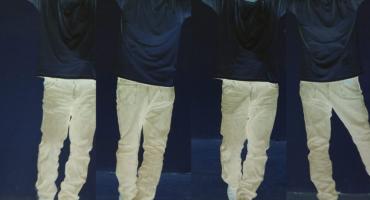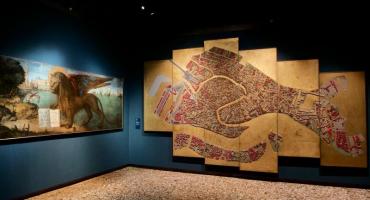The young workers had to pass a period
of apprenticeship, that lasted even for years, with a final exam before opening
a shop of their own and having the expert title. The corporations spread out to
all artisan production fields creating a highly specialised working class
capable of opposing any foreign rivalry. The Dominant one, which obviously
couldn’t count on its own agricultural production, had the necessity to bring
to the maximum levels the production of manufactured articles in order to stand
out in all the European markets.
The so-called Lesser Arts reached levels
of considerable elegance and sophistication especially because Venice was able
to count on much original and exclusive raw materials which used to arrive from
the Orient through the long Silk Road crossed by merchants and caravan guides.
Each Art was in possession of an emblem,
(some very precious ones are kept in Museum Correr): wooden table on top of
which the relevant profession was painted with its characteristics and tools
used to practice it. There were no indications about the use of gold for
celebrating magnificence of Serenissima. Gold on the other hand was very
diffused in the rich Byzantium, it was a perfect mean to represent the
sacredness of a place, an object, a material, and Venice experimented with it
rather soon in its thousands of square metres of mosaics in the basilica of St
Mark’s. So, the “Gilders’ were using a pure gold leaf (previously prepared in
Scuola dei Tira-battioro - the Goldsmith’s Guild, which, even today, with many
other functions, can be visited in that very baroque, delicious and elegant
building that is found in San Stae) at the end of numerous workmanship phases,
with mixtures of chalk, red clay, egg whites and isinglass followed by the
burnishing phase with agate stone.
They used to apply their Art to various
decorations: from display ships, amongst which the dogal Bucintoro, to large
chests, headboards of beds and four-poster beds, cupboards for reliquaries,
frames, and especially the ceilings from which remain very precious testimonies
of gold associated to colours of the city which are the red and the blue.
Let’s think about the ceilings of the ancient Scuola di Carità (school of
charity, today incorporated in the Accademia galleries) or Scuola di San Rocco
or especially the exceptional decorations of the rooms of Doges’ Palace.
Works of the ‘gilders’ got diffused even
more in detail in 18th century when Rococo doors and furniture were
fashionable, lacquered and gilded, or the statues of famous ‘Moors’ with
turbans holding fruit plates or luminous torches or in the wooden parts of
theatres.
Venice had many ‘theatres’ amongst which
the jewel of Fenice, erected in the second half of 18th century
based on drawing by Giannantonio Selva. Rich stucco-works, engravings, panels
of the Theatre and Apollonian Halls aroused admiration of the world for their
preciousness and magnificence. Even the dramatic blazes didn’t wipe out this
splendour made immortal, like the life of the very Fenice, with accurate
reconstructions.
Gilded decorations surprise us even
today, they are beautiful, they are participating and protagonists of the
spectacle itself because they constitute the most refined and special context
to greet sublime art and music. There are only few ‘gilders’ left: in Campo San
Stefano and next to Ruga Giuffa in Santa Maria Formosa, and we enter their
shops with great respect so to steal with our eyes some gleams of the most
ancient Arts and Crafts of our city.
By Daniela Simionato-Putz / Cultural
Association “a friend in Venice”



